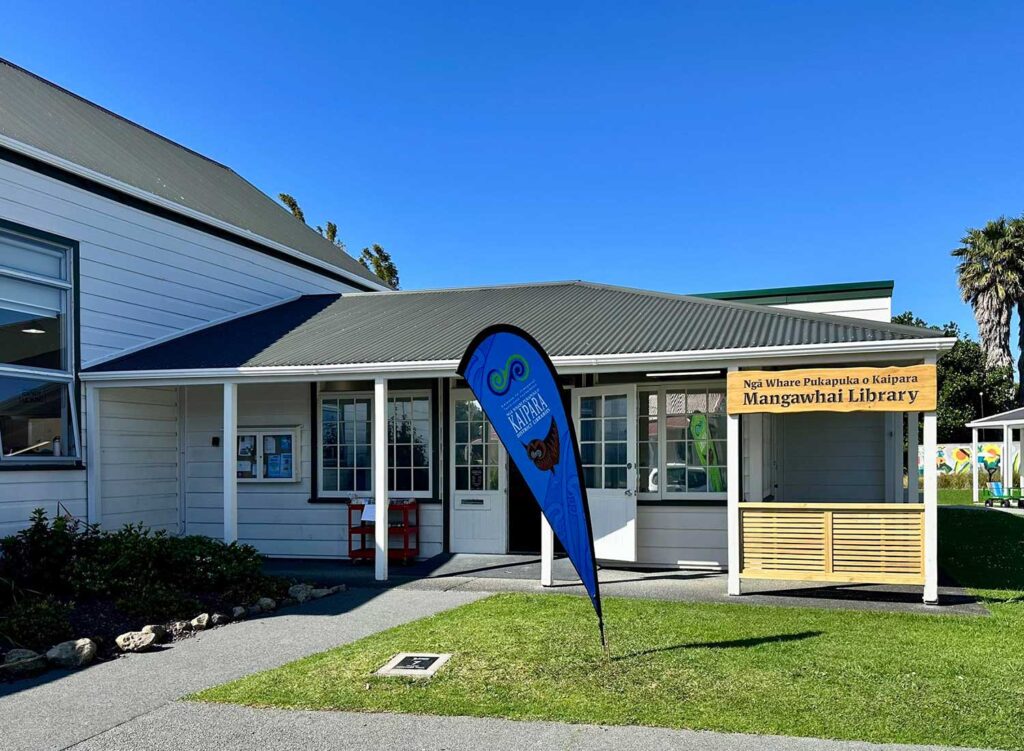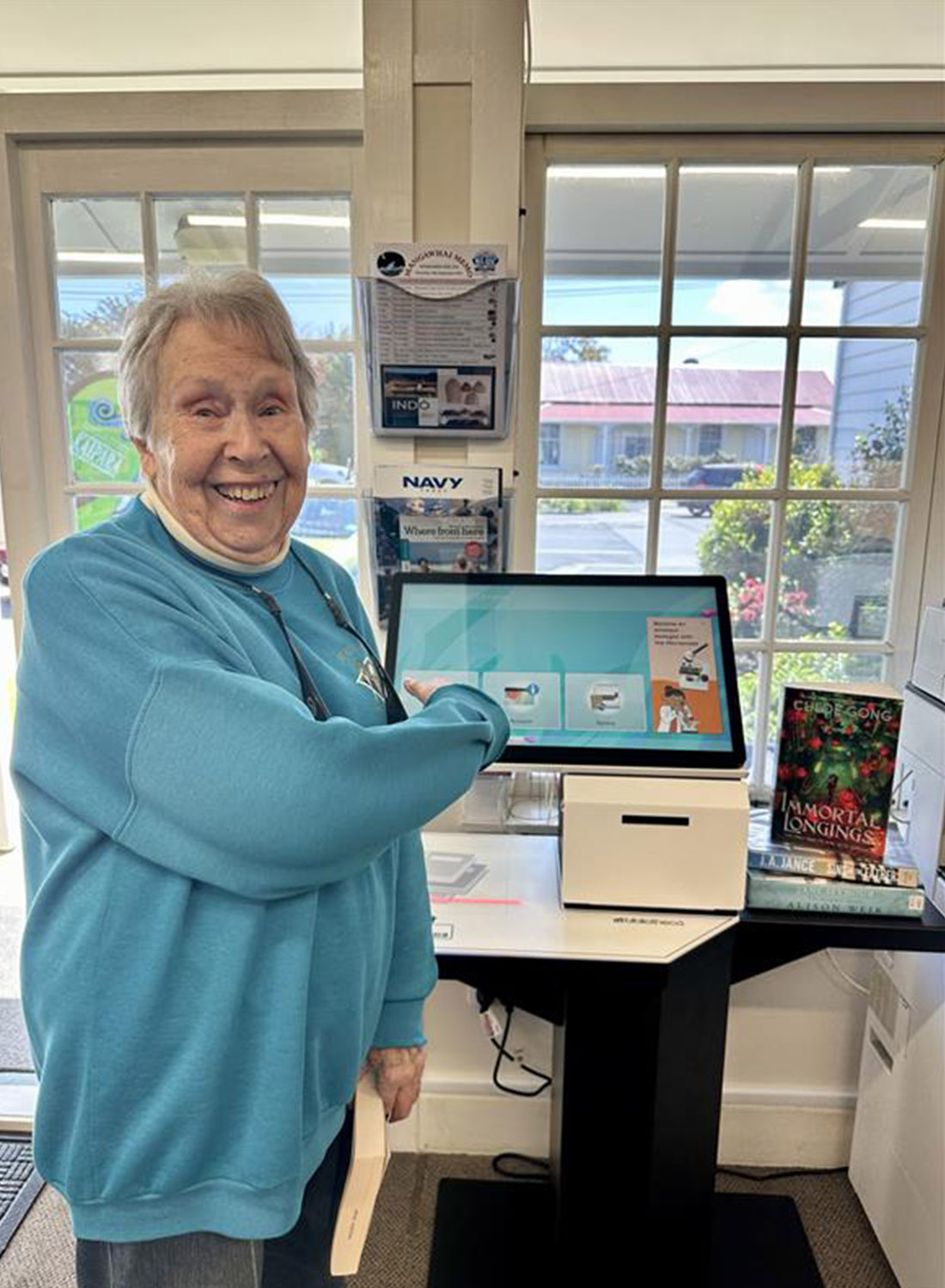Challenge
Solution
Result
In the Tasman Sea in the South Pacific Ocean, there is a small island filled with big hearts, big trees, lots of sweet potatoes, and a famous octogenarian named Bev. A mere two hours north of Auckland, New Zealand, you’ll find the richly forested, sea-spray saturated district of Kaipara on the Kauri Coast.
The district of Kaipara spans south from the Waipoua Forest, a fern-covered luminous land that is home to the country’s largest kauri tree: Tāne Mahuta. Nicknamed the “Lord of the Forest,” its age is estimated at 2,000 years and it shares the land with Te Matua Ngahere, known as the “Father of the Forest” with an age estimated between 2,500 and 3,000 years. The area is rich in Māori history, with settlements dating back hundreds of years, and its citizens take pride in preserving and honouring their heritage.
With a population of approximately 25,000, the district of Kaipara is a hub of farming, forestry, and beachcombing. The golden stretches of Baylys Beach attract and captivate vacationers by the thousands, while local arts, culture, and outdoor adventures keep community members and visitors busy year-round.
Where do the sweet potatoes come in? Kaipara is also known as the “Kumara Capital of New Zealand”, with kumaras growing abundantly in the tropical, sunny climate. Locals can tell you countless ways to prepare the root vegetable into delectables both savory and sweet.
While the island may be small, the personality of Kaipara is big, with a cadre of volunteers keenly dedicated to their district library for well over 100 years.
“We are a small library, but we offer mighty service, and we’re very proud of that,” says Molly Molving-Lilo, Lead Librarian of the newly anointed Mangawhai Branch Library of Kaipara District Libraries.
It takes about an hour to drive from the main library location in Dargaville on the west coast of the island, to the Mangawhai Library on the opposite coast, and peppered in between are three “community libraries” run entirely by volunteers in Paparoa, Maungaturoto, and Kaiwaka.

These community libraries are supported through grants and contributions to cover materials and operational expenses, and all of them are connected to the LMS used by Kaipara District Libraries. Most impressively, they are all kept functioning by loyal volunteers. In fact, before becoming officially staffed by Kaipara District Libraries, the Mangawhai location was also a community library run by volunteers.
“Mangawhai library has actually been volunteer-run in this community for the past 130 years,” Molly says (she asked that we refer to her by first name). “It’s really inspiring to see the commitment and all of the volunteers. We have three other community volunteer libraries in the district, as well. We work alongside them and essentially share a collection, and we support them with digital services and subsidised broadband. It got to a point in Mangawhai where stats were skyrocketing and volunteers were operating beyond their voluntary capacity, so Kaipara District Library stepped in, went to the Council, proposed to turn it into a professional branch, and here we are today.”
After the labor of love to reimagine the Mangawhai facility as a Branch Library within Kaipara District Libraries, there was much celebration and festivities, including prizes, food, and a ruru-themed scavenger hunt.
Molly heads the Mangawhai Branch, managing its daily operations and the work of two part-time librarians. “It’s not a big space,” she says, “we’re actually quite a small library. We can give you a 5-second tour, that’s our motto.”
Once the location became a professional branch, the library was able to increase its hours, and within the first two weeks of launching, over fifty community members signed up for new library cards.
“We offer enhanced services, including computer use and digital support. With the growing digital world, there is a growing digital divide, as well, and libraries are institutions that bridge that gap. I’m proud of offering services and connections to the community, and proud of the levels of access we’re providing to the community.”
Already using a Bibliotheca selfCheck in Dargaville Public Library, the staff prized its ease of use and its features to collect statistics and boost library advertising. Molly explains that they also saw “…how well the community has taken to it. With modernised library service, it makes sense to have a self-checkout machine.”
When refreshing the Mangawhai branch, she says,“We also wanted to provide a self-checkout in Mangawhai to help support the staff. The community really loves checking out their own books—and kids, they love it, they think it’s cool to be able to beep-beep every book.”
Molly and her team utilised Bibliotheca training when setting up the selfCheck 500 in their new library branch, learning, among many other things, how to change the colour of its lights and customise its screen with library promotions. She shared that having a selfCheck enables her staff to better serve and engage with people and “make them feel special,” and gives staff the flexibility and time to work on other projects.
She emphasised that the selfCheck 500 “…also empowers the customers and the community to issue their books, check their accounts, to look at what they’ve borrowed, what they need to renew. It puts that power in their hands and makes them feel like they’re contributing to their experience.”
Molly beamed about her Mangawhai team and the entire team within Kaipara District Libraries, plus the Kaipara District Council, for making the Branch a reality. “There’s so much to be proud of. This is a huge project for Kaipara Libraries, it’s a really nice step in the direction that we want to go.”
Perhaps above all else, she was overflowing with awe and pride for every single one of the community library volunteers. “They have been the backbone to the service and really built a strong foundation for us to come in and flourish. And of course, thanks to everyone in the community for using the library and willingly embracing change and the self-checkout machine, making it popular.”

Speaking of dedicated volunteers and community members, the Mangawhai Branch has both rolled into one exceptional individual named Beverly—Bev for short. Now in her 80s, Bev is a former longtime volunteer at Mangawhai and is one of the biggest cheerleaders of the selfCheck 500. So much so, that library staff have named the machine “Bev’s self-checkout.”
“We’ve dubbed it Bev’s self-checkout machine, because she was actually one of the first people to use it, with pure excitement and willingness to embrace this technology within this community.”
Molly shared parting words of encouragement to libraries considering adding a selfCheck: “Get it. Even with people previously hesitant to try it, the end result has always been that they loved it. Change is always happening, especially in the library world. It’s nice to embrace it, and it’s better to embrace it. Your community will love it as well, and we love it.”
Share This Library Story
You may also like
Insights + Trends

Waimakariri Libraries: Providing high-quality library experiences with Bibliotheca technology
the library selected Bibliotheca’s selfCheck 1000 self-service kiosks and smartShelf intelligent shelving for automated returns.

Access abounds in Australia: Blue Mountains Library
Discover how Blue Mountains Library in Australia transformed its services with RFID technology, connecting remote communities and enhancing access to essential resources during disasters.

Customer Story | A Vibrant Community Hub in Paisley
Experience Innovation at Paisley Library with Bibliotheca

